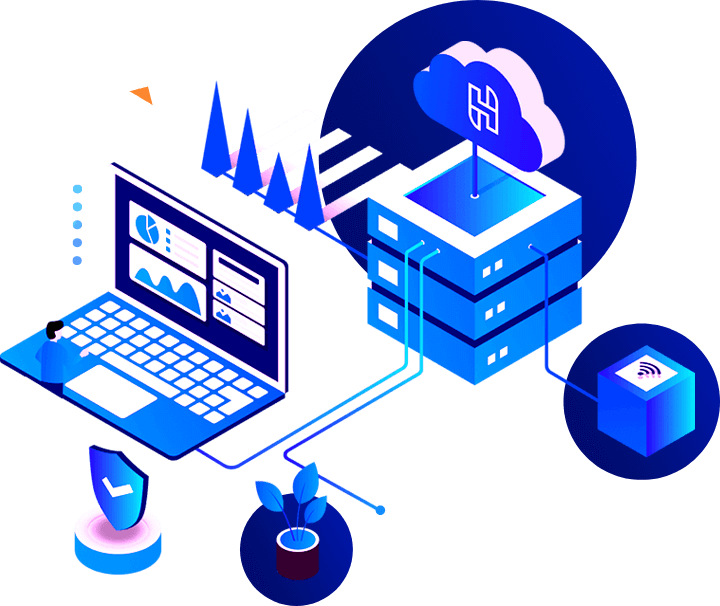Get a Quote for your next project

Discover the Potential of Online Project Management! We offer state-of-the-art virtual project management solutions that will improve teamwork and output.
Read More"Utilise Remote Business Analysis Support to Take Your Company to New Heights!" To propel your company ahead, tap into the knowledge of our seasoned business analysts who are accessible remotely.
Read MoreOur Professional Data Migration and Recovery Services Will Keep Your Company's Information Safe! We will not compromise on the security of your data, no matter what.
Read More"Let Our Cloud and Automation Services Revolutionise Your Business!" Get your operations ready for the future with our innovative solutions that boost efficiency and scalability.
Read More"Our Penetration Testing Services Will Strengthen Your Cyber Defences!" Use our professional penetration testing to keep your digital assets secure and protected from any dangers.
Read More"Ethical hacking expertise unlocks unparalleled security!" Our ethical hacking services can help you protect your digital landscape.
Read More"Take Advantage of Our Cutting-Edge Telephone System to Revolutionise Your Company's Communication!" Our state-of-the-art business phone systems will effortlessly improve connection and communication.
Read MoreThe New Standard in Efficiency: Meet Our Virtual Secretary Service! Our virtual secretary is an adaptable and dependable option for today's businesses looking to streamline their operations.
Read More"Experience the Power of Onsite IT Support for Your Business!" Our on-site IT support services provide you with first-rate technical knowledge and the ability to fix problems quickly.
Read MoreThe process of developing applications that run on distant servers and are sent over the Internet to the user's device is known as web application development. A web application (web app) can be viewed across a network without the need to download it.
Read MoreCombining human resources and technological capabilities, a Security Operation Center (SOC) tracks security threats, handles crises, and counters cyberattacks. A SOC may consist of an externally contracted third party or a centralized team.
Read MoreIITec inc offers a comprehensive Security Information and Event Management (SIEM) solution that gives your company access to real-time security data, analytics, and alarms. This is achieved by leveraging the power of SIEM technologies.
Read MoreWe will not tell lies. The technical stack of Splunk is complex. Nevertheless, iitecinc. is well-versed in Splunk. We can support you every step of the way as you swiftly become up and running with the platform and then scale it effectively.
Read MoreIn the age of digitalization, your company is always open to assault. Hackers will have more time to take advantage of vulnerabilities and cause greater harm to your systems and sensitive data the longer you put off fixing them.
Read More
A set of tools and technologies known as cloud integration links different applications, systems, repositories, and IT environments to enable the real-time interchange of information and workflows.
Other names for cloud integration include iPaaS, cloud data integration, cloud system integration, and cloud-based integration.
Cloud integration encompasses both fully in-cloud and hybrid deployments; the ultimate objective is to operate as a unified IT infrastructure that optimizes data flow. Once combined, numerous devices can access the data and integrated cloud services via the internet or a network.



Data recovery refers to the process of retrieving or restoring lost, damaged, or inaccessible data from storage devices such as hard drives, solid-state drives, USB drives, memory cards, and more.
Data migration involves transferring data from one system, storage device, or format to another. This process can be driven by various reasons, including upgrading systems, adopting new technologies, or consolidating data from multiple sources.
While data recovery focuses on retrieving lost or damaged data, data migration is about moving data between systems or formats. Both processes are crucial in managing and maintaining digital information in various IT environments.



Collaboratively formulate principle-centered users and revolutionary human capital. Progressively evolve domain and hosting
“Go Business India connects the dots from corporate strategy and objectives to Cloud integration, Data Recovery and Data Migration and measurable results. They always come through for 11TEC.”
“It was a tough call but this all could have been possible only because of strong support from B-Square team lead by Mr Aji George.”
“Earlier we were using multiple applications to manage our business, now we have been able to manage our business operations quite seamlessly with B-Square software as service Solution.”
“Today I can recommend B-Square to all as a true partner who can provide not just a software but complete solution to your challenges.”



Cybersecurity focuses on protecting computer systems, networks, and data from theft, damage, or unauthorized access.
mplementing security measures to protect systems and data.
Monitoring for security breaches and investigating violations.
Developing and implementing security policies and procedures.
Conducting risk assessments and vulnerability testing.
Responding to and mitigating cybersecurity incidents.






